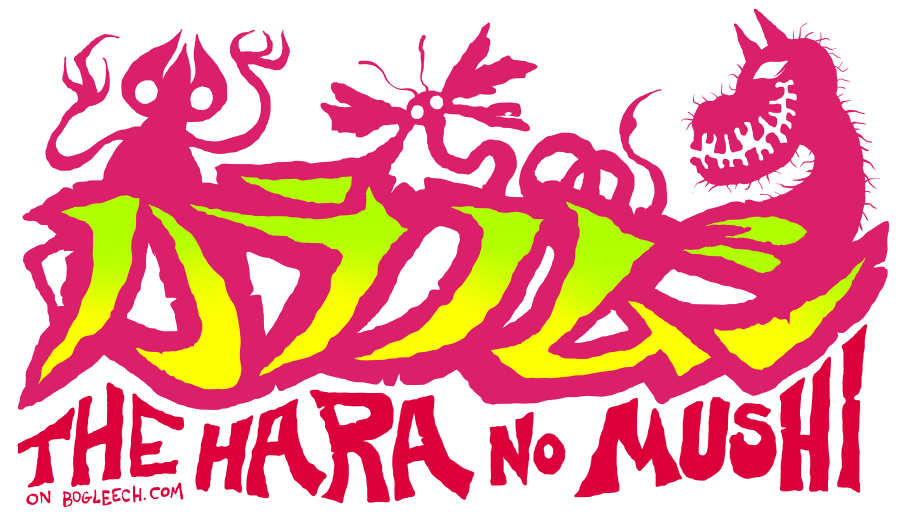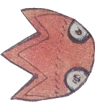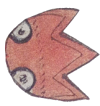
DAY THIRTEEN: KAMISUBAKU
("Biting Inch White")
Written by Jonathan Wojcik, Researched and Translated by Rev Storm
This is also one that includes an unusual and interesting cure. Most of the bugs are cured by the intake of various herbs, but for Kamisubaku, you must mince the hairs of a gray horse's tail with noodles and flour, which must be kneaded with high grade sake. The reason it works is said to be because the minced horse hairs contain residual thought that breaks the bug into small pieces.
Design Review:
Well, it sure is a white worm. Another white worm; there are several visually similar ones we're skipping over because they just aren't that unique or interesting. The mention of a mouth at every segment of this worm is very interesting, but the illustration doesn't really express it. What's really more interesting is its likely real-world inspiration...TODAY'S REAL WORLD PARASITE:
Dracunculus medinensis

Dracunculus may be the most feared and reviled human parasite on the face of the Earth to those who are familiar with it, and as much as I want to defend the natural place of every single organism to ever exist, it's truly understandable that there are efforts to eradicate this parasite from existence. You may have heard of it by the name "Guinea Worm," but what exactly is Guinea Worm?
This is another nematode parasite, and it's also another parasite that begins its existence as a larva in the body of an aquatic crustacean, a tiny copepod of the genus Cyclops (this by the way is the same organism as Plankton from Spongebob, just as an aside). The primary, usually mammalian host may contract the parasite by accidentally swallowing these crustaceans in unfiltered drinking water, and the larvae metamorphose into either male or female adults in the primary host's digestive tract.
The mature worms meet up and mate within the host tissues, after which the male dies and the female begins to worm her way through the host's subcutaneous tissue, a process that is agonizingly painful. Migrating generally downwards where she may even end up on or near the genitalia. She eventually stops, and forms a large, painful blister that later ruptures. At this point the worm begins to emerge from the host's body over the course of days or even weeks, causing such intense, burning pain that the host is compelled to immerse themselves in cool water - the perfect means of spreading her eggs to new Copepoda.
Did you know how big a Guinea Worm was, by the way? How long this thing is that tunnels through your skin and out through a weeping, burning, massive boil? Thirty inches.
Dracunculus was expected to be wiped out by little more than better access to water filtration, and humans could indeed be free of its torture forever if we could simply bring everybody up to modern standards of indoor plumbing. However, it has recently been found that the worms aren't exclusively parasites of humans or even necessarily of mammals, but can successfully reproduce in the bodies of frogs.



































